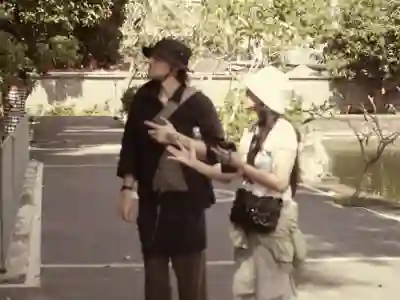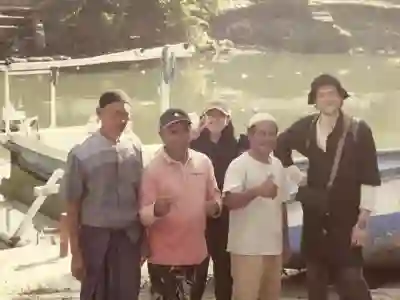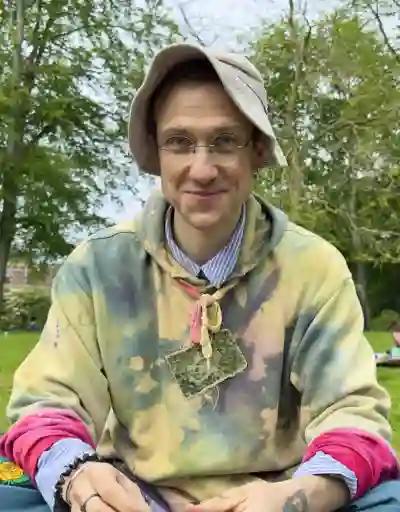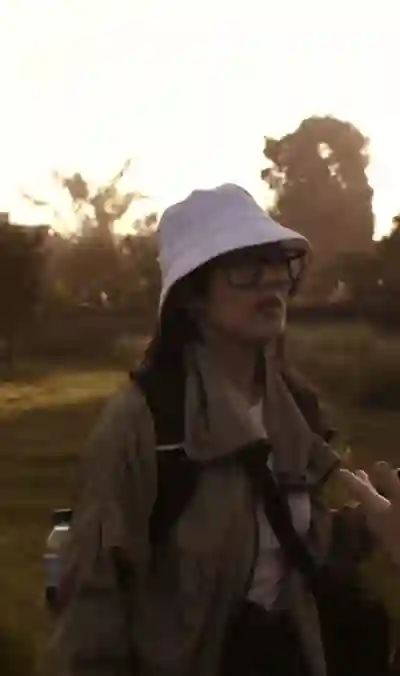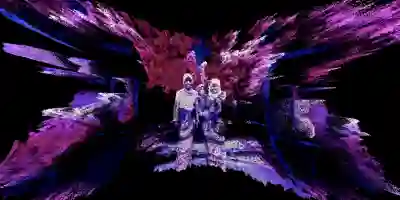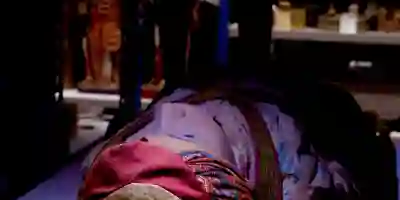Lombok Treasure
Idak-Idak-Idak is a hybrid-documentary relating the stolen Lombok Treasures with the Sasak diaspora through three generations of women: a daughter, her mother, and her grandmother. Blending full-spectrum cinematography with personal footage, this film moves between Indonesia and the Netherlands to examine colonial legacies, displacement and healing the heart of home. In Sasak, "Idak" can be interpreted as both “heart” and “absence”, becoming a container for memory, loss, and the unseen layers of the self between generations.
The artefact
The central artefacts in Idak-Idak-Idak are part of the Lombok Treasures, a vast collection of royal regalia, sacred objects, heirlooms, and gemstones seized by the Dutch colonial army during the 1894 invasion of Lombok. These artefacts were looted from the palace of the Balinese Karangasem Dynasty in Mataram during a violent military campaign that led to mass death and displacement. After being taken to the Netherlands as colonial spoils, the treasures were scattered across institutions, museums, and private collections, where many remain today.
The Lombok Treasures represent more than material wealth—they embody spiritual authority, cultural lineage, and the political sovereignty of a once-independent kingdom. To the communities from which they were taken, they are not just “objects,” but active symbols of identity, memory, and ancestral power. Some of the treasures, including ceremonial kris (daggers), gold ornaments, and sacred stones, were used in rituals and court life, linking them to a broader cosmology that was disrupted through their violent removal.
Despite recent moves toward restitution, the provenance of many of these items remains uncertain. There are gaps in documentation, missing objects, and contested narratives about ownership, legitimacy, and return. This ambiguity—what is known, what is hidden, and what has been forgotten—creates a space for artistic intervention.
Idak-Idak-Idak begins in that space: not with a catalogue of items, but with the emotional and cultural residue they’ve left behind. By imagining the gemstones as sentient narrators, and tracing their echoes through the lives of a grandmother and granddaughter split between Indonesia and the Netherlands, the film reclaims the human stories often erased by colonial archives. Our artistic process moves from historical facts into speculative storytelling, asking what it means for something—be it an artefact or a person—to be taken, displaced, and redefined across time.
The collaboration
We approached the artefact—the Lombok Treasures—not simply as historical objects, but as living witnesses to centuries of displacement, memory, and cultural transformation. Instead of focusing on institutional restitution, we were more drawn to the emotional and symbolic weight these treasures still carry. Their provenance is partially documented, partially forgotten, and sometimes entirely unknowable—many of the gemstones may not even be native to Indonesia, hinting at histories of trade, empire, and movement that stretch across South and Southeast Asia.
Neither of us had previously worked with full-spectrum cinematography, but we chose to learn and adopt this method specifically for Idak-Idak-Idak. The technology allows us to see beyond the visible spectrum—into ultraviolet and infrared—which mirrors how these stones might “see” and absorb the world. We were fascinated by the idea that colour, like in the gemstones themselves, could carry narrative weight. Using this method became a way to make invisible histories visible, to embody the spectral presence of things that remain unspoken or lost.
Kae brought her background in new media and cultural memory to anchor the film in the lived and ancestral experiences of Indonesians, while christopher contributed narrative structure, editing sensibility, and a hybrid cinematic language that allowed the film to move between history, speculation, and the poetic.
Rather than trying to “solve” the mystery of the artefacts, we used our distinct approaches—and the new visual language we developed together—to create a film that treats the gemstones as sentient narrators. Our collaboration reflects the diasporic movement and cross-cultural entanglement at the core of the film. Together, we approached the artefact not as a relic of the past, but as a lens through which to imagine new futures.
The artists
Kae Oktorina
Kae Oktorina is a media artist whose practice explores the relationships between humans and nature, sensorial perception, and cultural memory. Her work often involves video, animation, and experimental media to create immersive experiences that question how we inhabit landscapes—physically, emotionally, and historically. While her previous projects have focused on environmental narratives and the clash between natural and built worlds, in Idak-Idak-Idak, Kae shifted her attention to history: specifically, how the legacy of colonialism continues to shape identity, memory, and belonging. Although she had no prior experience with full-spectrum cinematography, she embraced the technique for its ability to reveal unseen layers of reality—much like the hidden stories within the gemstones themselves.
christopher tym
christopher tym is an artist-filmmaker whose practice explores the complexities of navigating virtual and physical worlds in relation to ecosystems and cultural identity. his work often merges documentary and constructed narratives, combining affective editing, layered sound design, and speculative propositions. With a background in animation and experimental film, christopher is interested in how storytelling and visual innovation can challenge linear time and unlock future perspectives.
In Idak-Idak-Idak, christopher brought a strong editorial vision and conceptual clarity, helping to shape a non-linear, polyphonic narrative that gives voice to both people and objects. His collaborative and research-driven approach was essential in building a cinematic language that could hold both accessibility and complexity with care.
The results
Idak-Idak-Idak became a film less about the physical return of the Lombok Treasures and more about the emotional, cultural, and generational impact of their loss. While it began as a historical inquiry into looted artefacts—sacred objects and gemstones taken by the Dutch in 1894—it evolved into a sensorial, poetic reflection on displacement and memory. The uncertain provenance of the gemstones, some possibly originating from beyond Indonesia, opened a space for imagining their perspective: what they witnessed, what they remember.
Told through the voices of a Grandmother in Lombok, her daughter and her granddaughter in the Netherlands, the film brings a human lens to the debate around restitution. Their experiences echo the fractured legacy of colonialism, where identity and belonging are negotiated across time and place. The artefacts become emotional mirrors, not just historical evidence.
In the end, Idak-Idak-Idak is not about solving the question of return. It is about re-framing it—inviting viewers to dwell in the complexity of inheritance, dislocation, and memory. Through cross-cultural collaboration and polyphonic storytelling, this film reimagines provenance by shifting focus from “repatriation” to “rematriation” and exploring the complexity of healing between generations that have felt the impacts of colonial trauma.These artefacts become portals, not trophies—revealing the emotional truths that remain long after the physical objects are taken and projecting into a more hopeful and loving future.





